Text
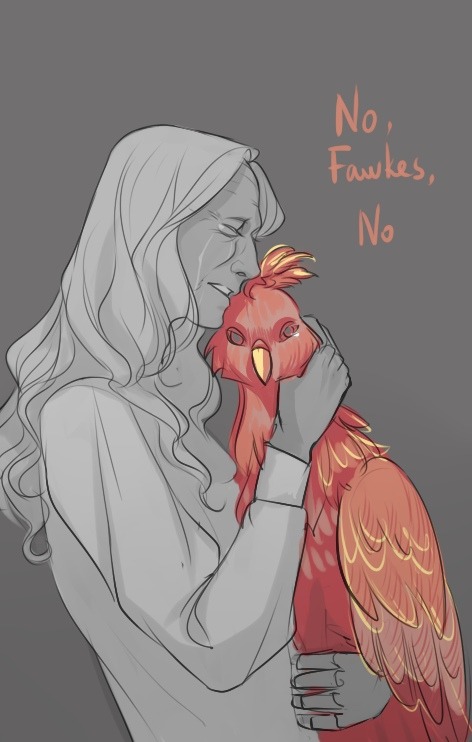
Quick sketch for Gellert and Fawkes after Albus'es death
394 notes
·
View notes
Text
dumbledore: it does not do to dwell on dreams and forget to live
harry: but all my dreams are way better than reality
486 notes
·
View notes
Text
Two male characters.
One’s a pacifist and the other a leader of a resistance-ish group.
Both have supernatural abilities.
One wants to live in peace with normal humans, the other wants to fight back and for the supernatural to take power.
They had a period when they used to be friends, before the bad breakup happened, where someone got hurt.
The leader has a device that protects him from the pacifists powers
The leader managed to convince one of the pacifist allies to join his side.
Everyone has agreed that the two are gay.
Tell me, is this Grindeldore or Cheric?
114 notes
·
View notes
Photo


2016 vs 2019
I didn’t want to change the colour palette that much
2K notes
·
View notes
Link
Finally!!!
Actual news! <3
73 notes
·
View notes
Photo

Who slipped through my fingers
333 notes
·
View notes
Text

© Melli ~ Don’t share/repost without credit please
215 notes
·
View notes
Text
Yes, the variety is key because different people need different things. That's where the "the ONLY stories about gay characters out there are sad" complaint comes from--for so long that was the case and people wanted some positive stories too. That statement does not need to, and should not, turn into "sad stories about gay characters are inherently homophobic".
the thing about representation is that different people have different needs and desires about how they want to see people like them represented in fiction and sometimes these needs/desires are highly conflicting with each and it’s important to remember that this is okay.
one queer person might want queer characters in fluffy stories where they never die and always have a happy ending, they might want queer heroes who struggle but always overcome their problems, they might want queer narratives that are filled with found family and love and affection.
another queer person might want queer characters in gritty grimdark stories where a happy ending is not an option, they might want queer villains who are unrepentantly out for nothing but their own gain, they might want queer narratives that are bitter and hurtful and filled with betrayal and deceit.
and yet another queer person might want all of that and more.
good representation is not necessarily “this group of people always being written in this specific way in these specific kinds of stories”, but is instead a wide variety in how those people are written and the kinds of stories they are written in. there is no limit for the amount of marginalized characters who can be created, no limit on the number of stories they can have, no limit on the ways they can be portrayed. good rep is in writing people in every way possible and then a few more ways on top of that so that everyone can have stories that appeal to them that are about people like them.
3K notes
·
View notes
Photo

I actually like Johnny Depp as Grindelwald.
247 notes
·
View notes
Photo
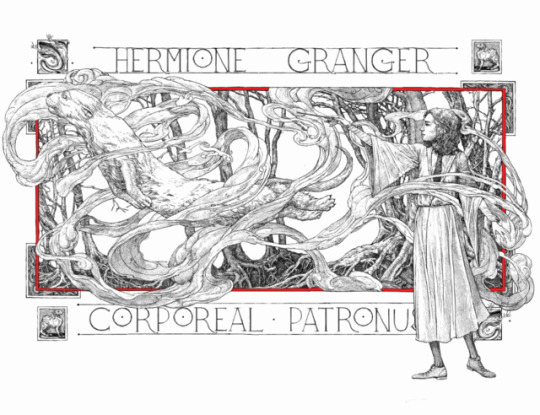
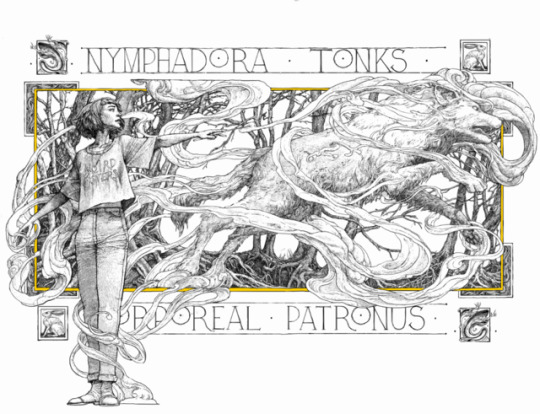

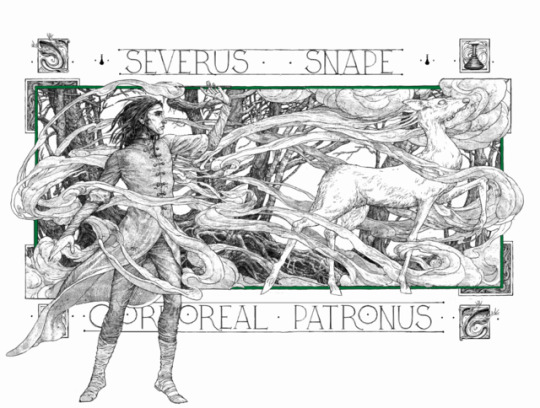
Harry Potter and the Prisoner of Azkaban: House Edition’s Patronus illustrations by Levi Pinfold
3K notes
·
View notes
Photo
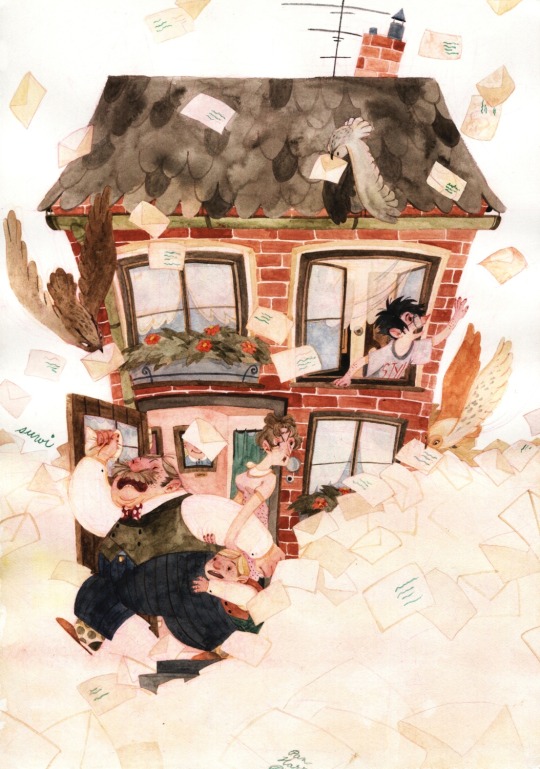

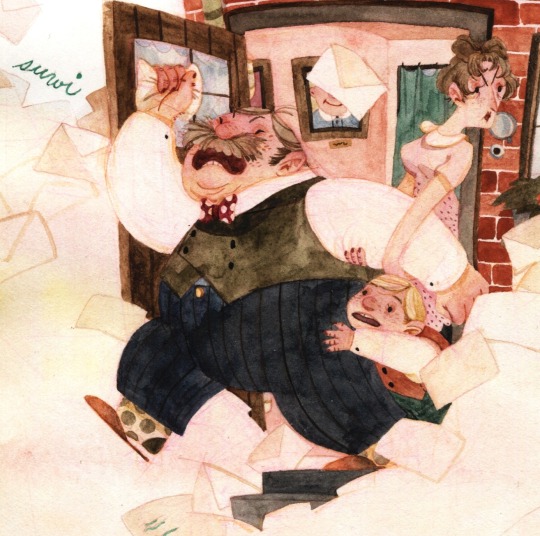
4 Privet Drive Christmas gift for my cousin Venda, illustration for The Philosopher’s stone :3
4K notes
·
View notes
Text

Don’t share or repost without credit “@albuswaffleboy” thanks!
103 notes
·
View notes
Text
And yet speaking up leaves you open to twice as much misinterpretation.
“One of the risks of being quiet is that other people can fill your silence with their own interpretation: You’re bored. You’re depressed. You’re shy. You’re stuck up. You’re judgmental. When others can’t read us, they write their own story—not always one we choose or that’s true to who we are.”
— Sophia Dembling
5K notes
·
View notes
Text
It's probably a bit like a political party is set up with campaign funds and payroll, and it also looks like a lot of his close followers have their own wealth in pureblood families, who may or may not need to work, and maybe even donate to the cause.
While working on a prompt I was about to have Gellert suggest to Vinda that he probably should give her a raise, which gave me pause because hm. Yes, the acolytes work for him, but they probably don’t get paid for it? I’m assuming it’s a similar situation to the Death Eaters, who all (eh, most) had real jobs outside cult hours which gave them a lot of connections and benefits to serving Voldemort. But Grindelwald’s inner circle… are they on his payroll? He’s got a big castle in which some of them seem to live, so it doesn’t really look like he’s low on cash. But they also killed those poor muggles and took over their apartment instead of like… renting a 1920’s airbnb. Or a hotel room. So are they just really devoted to their cause and enjoying employee benefits which apparently include living in a beautiful castle in Switzerland (for free!), is Grindelwald paying them… or are they working double-time?
42 notes
·
View notes
Photo

(Image caption: Theory of Gene Therapy by AAV-PQBP1: In Alzheimer’s disease state, the nuclear scaffold protein SRRM2 and the synapse-gene regulator PQBP1 are decreased. By increasing PQBP1 in neurons, expression of synapse genes are recovered and cognitive defects are rescued in Alzheimer’s patients)
Early Changes to Synapse Gene Regulation May Cause Alzheimer’s Disease
Alzheimer’s disease (AD) is the most common form of dementia, involving memory loss and a reduction in cognitive abilities. Patients with AD develop multiple abnormal protein structures in their brains that are thought to destroy or damage nerve cells (neurons). One of these structures, the senile plaque, is made up of clumps of beta-amyloid (Aβ) peptide which form in the spaces between neurons.
Many advanced clinical trials in patients with AD have attempted to slow down or reverse the disease by targeting these plaques for removal. However, despite the successful decrease in Aβ aggregation, these trials mostly have failed to improve memory or cognitive function in AD patients.
Before the formation of Aβ aggregates, studies revealed changes in the phosphorylation (a chemical modification) of certain proteins, including SRRM2. This protein was thought to be involved in a form of gene regulation known as splicing, but its exact function was unclear.
Now, a Japanese team of researchers led by Tokyo Medical and Dental University (TMDU) has examined levels of SRRM2 phosphorylation in a mouse model of AD, and found that they increased prior to Aβ aggregation. This ultimately prevented the nuclear transport of SRRM2 and led to reduced levels of PQBP1 protein, which has been linked with the neurodevelopmental and intellectual disorders. The study results were reported in Molecular Psychiatry.
“We showed that the increased phosphorylation of SRRM2 prevented it from interacting with another protein which aids protein folding,” says first author Hikari Tanaka. “In the absence of this interaction, SRRM2 remained unfolded so was not transported to the nucleus and was degraded in the cytoplasm.”
The team next measured levels of SRRM2 and PQBP1 protein in the cerebral cortex of early-phase AD mice and human end-stage AD patients as well as in human AD iPS cells. Both proteins were greatly reduced compared with corresponding amounts in healthy controls.
“To find out what effect a reduction in PQBP1 would have in vivo, we generated knockout mice in which the PQBP1 gene was disrupted,” explains corresponding author Hitoshi Okazawa. “We observed cognitive decline and changes in the morphology of their synapses, which are junctions between neurons that allow electrical and chemical communication. These changes were caused by disrupted patterns of synapse gene splicing.”
A viral vector containing PQBP1 was used to recover the synapse protein expression in these mice. Not only did this restore PQBP1 expression, but it also recovered the abnormal phenotypes. These findings offer a new insight into early changes that occur during AD pathology involving splicing proteins, suggesting possibilities for gene therapies by virus vectors.
127 notes
·
View notes

